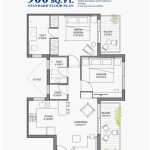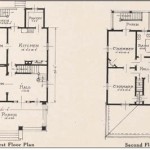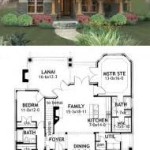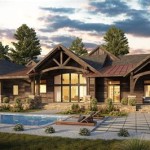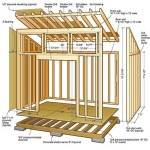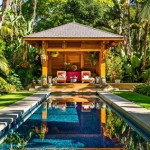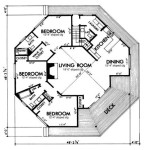Timeless house plans are architectural designs that transcend fleeting trends and styles, offering enduring appeal and functionality. They prioritize timeless elements that resonate with homeowners across generations, such as classic proportions, natural materials, and flexible layouts that adapt to changing lifestyles.
A notable example of a timeless house plan is the Craftsman bungalow, which emerged in the early 20th century. Characterized by its low-slung profile, exposed beams, and welcoming porches, this design has remained popular for over a century due to its enduring charm and practicality.
In the following sections, we will delve into the key principles and features that define timeless house plans, exploring the factors that contribute to their lasting appeal and timeless enduring quality.
Timeless house plans share several key characteristics that contribute to their enduring appeal:
- Classic proportions
- Natural materials
- Flexible layouts
- Functional spaces
- Enduring styles
- Quality craftsmanship
- Sustainable design
- Universal appeal
These elements combine to create homes that are not only beautiful and comfortable but also stand the test of time, adapting to changing needs and aesthetics.
Classic proportions
Classic proportions refer to the harmonious relationships between the various elements of a building, such as the height of the ceilings, the width of the windows, and the overall massing of the structure. In timeless house plans, these proportions are carefully considered to create a sense of balance and visual appeal that transcends fleeting trends.
One of the most important aspects of classic proportions is the use of the golden ratio, which is a mathematical ratio of approximately 1:1.618. This ratio is often found in nature and is considered to be aesthetically pleasing. Architects have used the golden ratio for centuries to create buildings that are visually harmonious and pleasing to the eye.
In addition to the golden ratio, classic proportions also incorporate other principles of geometry, such as symmetry and asymmetry. Symmetry can create a sense of order and balance, while asymmetry can add interest and visual variety. By carefully combining these principles, architects can create timeless house plans that are both beautiful and functional.
Here are some examples of classic proportions in timeless house plans:
- A rectangular living room with a ceiling height that is approximately 1.618 times the width of the room.
- A front door that is approximately 1.618 times taller than it is wide.
- A window that is approximately 1.618 times wider than it is tall.
These are just a few examples, and there are many other ways to incorporate classic proportions into a house plan. By following these principles, architects can create homes that are both timeless and beautiful.
Natural materials
Natural materials are a key element of timeless house plans. They bring a sense of warmth, beauty, and authenticity to a home, and they can also help to create a healthier and more sustainable living environment.
- Wood
Wood is one of the most popular natural materials used in home construction. It is strong, durable, and beautiful, and it can be used in a variety of applications, from framing to flooring to cabinetry. Wood also has a natural ability to regulate humidity, which can help to create a more comfortable and healthy indoor environment.
- Stone
Stone is another popular natural material used in home construction. It is strong, durable, and fire-resistant, and it can be used in a variety of applications, from countertops to flooring to exterior cladding. Stone can also help to create a sense of luxury and sophistication in a home.
- Brick
Brick is a type of clay-based material that is fired at high temperatures to create a strong and durable building material. Brick is often used in exterior cladding, but it can also be used in interior applications, such as flooring and fireplaces. Brick is a versatile material that can be used to create a variety of different looks, from traditional to contemporary.
- Concrete
Concrete is a mixture of cement, sand, gravel, and water. It is a strong and durable material that can be used in a variety of applications, from foundations to walls to driveways. Concrete can also be used to create a variety of different finishes, from smooth to textured.
These are just a few of the many natural materials that can be used in timeless house plans. By incorporating natural materials into their designs, architects can create homes that are both beautiful and sustainable.
Flexible layouts
Flexible layouts are a key feature of timeless house plans. They allow homeowners to adapt their homes to changing needs and lifestyles over time. This flexibility is achieved through the use of open floor plans, modular design, and convertible spaces.
- Open floor plans
Open floor plans eliminate the traditional walls between the kitchen, dining room, and living room, creating a large, open space that can be used in a variety of ways. This type of layout is ideal for families who want to spend time together in one large space, and it can also be easily adapted to accommodate guests or extended family members.
- Modular design
Modular design involves using prefabricated modules to construct a home. These modules can be combined in a variety of ways to create a variety of different floor plans. This type of design is ideal for people who want to customize their home to their specific needs, and it can also be used to create homes that are more sustainable and energy-efficient.
- Convertible spaces
Convertible spaces are rooms that can be used for multiple purposes. For example, a guest room can be converted into a home office, or a den can be converted into a playroom. This type of flexibility is ideal for families who need to adapt their homes to changing needs over time.
- Universal design
Universal design is an approach to design that creates spaces that are accessible to people of all ages and abilities. This type of design can be incorporated into timeless house plans through the use of features such as wide doorways, ramps, and accessible bathrooms. Universal design is not only important for people with disabilities, but it can also benefit everyone in the home, making it a valuable feature for timeless house plans.
By incorporating flexible layouts into their designs, architects can create homes that are adaptable, comfortable, and timeless.
Functional spaces
Functional spaces are another key feature of timeless house plans. They are designed to meet the needs of everyday life, and they can help to make a home more comfortable, efficient, and enjoyable.
Kitchen
The kitchen is one of the most important functional spaces in a home. It is where families gather to cook, eat, and socialize. A well-designed kitchen should be efficient and functional, with plenty of storage space, counter space, and natural light. It should also be located near the dining room and living room, so that it is easy to entertain guests.
Bathrooms
Bathrooms are another important functional space in a home. They should be designed to be private, comfortable, and efficient. A well-designed bathroom should have a separate toilet area, a sink with plenty of counter space, and a bathtub or shower. It should also be well-lit and ventilated.
Bedrooms
Bedrooms are where people go to sleep and relax. They should be designed to be private, comfortable, and quiet. A well-designed bedroom should have a comfortable bed, plenty of storage space, and natural light. It should also be located away from noise sources, such as the street or the kitchen.
Living room
The living room is where people gather to socialize, watch TV, and relax. It should be designed to be comfortable and inviting, with plenty of seating and natural light. It should also be located near the kitchen and dining room, so that it is easy to entertain guests.
By incorporating functional spaces into their designs, architects can create homes that are not only beautiful but also comfortable and efficient.
Enduring styles
Enduring styles are those that have stood the test of time and continue to be popular today. They are characterized by their classic lines, simple forms, and timeless appeal. The following are some of the most enduring styles for timeless house plans:
- Traditional style
Traditional style homes are characterized by their symmetrical facades, pitched roofs, and dormer windows. They often have a formal living room and dining room, as well as a cozy family room. Traditional style homes are known for their timeless appeal and classic beauty.
- Craftsman style
Craftsman style homes are characterized by their exposed beams, built-in cabinetry, and natural materials. They often have a wide front porch and a cozy fireplace. Craftsman style homes are known for their warmth and livability.
- Colonial style
Colonial style homes are characterized by their rectangular shape, symmetrical facade, and central chimney. They often have a white picket fence and a charming front porch. Colonial style homes are known for their classic beauty and timeless appeal.
- Mid-century modern style
Mid-century modern style homes are characterized by their clean lines, open floor plans, and large windows. They often have a flat roof and a carport. Mid-century modern style homes are known for their simplicity and functionality.
These are just a few of the many enduring styles that can be used for timeless house plans. By incorporating these styles into their designs, architects can create homes that are both beautiful and timeless.
Quality craftsmanship
Quality craftsmanship is essential for creating timeless house plans. It ensures that the home is built to last, using the best materials and construction techniques. This results in a home that is not only beautiful but also durable, energy-efficient, and comfortable.
- Attention to detail
Quality craftsmanship is evident in the attention to detail in every aspect of the home. From the joinery to the finishes, everything is done with care and precision. This results in a home that is not only beautiful but also well-built and durable.
- Use of quality materials
Quality craftsmanship also involves using the best materials available. This includes using durable materials for the exterior of the home, such as brick or stone, and using high-quality finishes for the interior, such as hardwood floors and granite countertops. Using quality materials ensures that the home will last for many years to come.
- Skilled labor
Quality craftsmanship requires skilled labor. This means hiring experienced and qualified contractors who know how to build a home to the highest standards. Skilled labor ensures that the home is built correctly and efficiently, resulting in a home that is both beautiful and durable.
- Building codes
Quality craftsmanship also involves following all applicable building codes. This ensures that the home is built to the minimum safety and quality standards. Following building codes helps to protect the homeowner from potential problems down the road.
By incorporating quality craftsmanship into their designs, architects can create homes that are not only beautiful but also durable, energy-efficient, and comfortable. These homes are built to last and will continue to be enjoyed by families for generations to come.
Sustainable design
Sustainable design is an important consideration for timeless house plans. It involves designing homes that are energy-efficient, water-efficient, and environmentally friendly. This results in homes that are not only comfortable and healthy to live in, but also have a reduced impact on the environment.
- Energy efficiency
Energy efficiency is one of the most important aspects of sustainable design. It involves designing homes that use less energy to heat, cool, and power. This can be achieved through a variety of means, such as using energy-efficient appliances, installing solar panels, and improving insulation. Energy-efficient homes are not only good for the environment, but they can also save homeowners money on their energy bills.
- Water efficiency
Water efficiency is another important aspect of sustainable design. It involves designing homes that use less water. This can be achieved through a variety of means, such as using low-flow fixtures, installing rainwater harvesting systems, and planting drought-tolerant landscaping. Water-efficient homes are not only good for the environment, but they can also save homeowners money on their water bills.
- Indoor environmental quality
Indoor environmental quality (IEQ) refers to the quality of the air and environment inside a home. It is important to design homes with good IEQ, as it can impact the health and well-being of the occupants. Good IEQ can be achieved through a variety of means, such as using low-VOC materials, providing adequate ventilation, and controlling moisture levels. Homes with good IEQ are not only healthier to live in, but they can also improve the occupants’ productivity and well-being.
- Site orientation
Site orientation is another important aspect of sustainable design. It involves designing homes that are oriented to take advantage of the sun’s energy and natural ventilation. This can be achieved by placing the home on the lot in a way that maximizes solar exposure and minimizes heat gain. Homes with good site orientation are not only more comfortable to live in, but they can also reduce energy costs.
By incorporating sustainable design principles into their designs, architects can create homes that are not only beautiful and timeless, but also energy-efficient, water-efficient, and environmentally friendly. These homes are not only good for the environment, but they can also save homeowners money and improve their quality of life.
Universal appeal
Universal appeal refers to the ability of a design to be appreciated and enjoyed by people from all walks of life, regardless of their age, gender, culture, or background. Timeless house plans have universal appeal because they incorporate design elements that are both familiar and inviting.
One of the most important elements of universal appeal is simplicity. Timeless house plans are often characterized by simple, clean lines and forms. This simplicity makes them easy to understand and appreciate, regardless of one’s cultural background or personal preferences.
Another important element of universal appeal is functionality. Timeless house plans are designed to be functional and efficient, with well-thought-out floor plans and spaces that flow easily from one to another. This functionality makes them appealing to people of all ages and abilities.
Finally, timeless house plans often incorporate elements of nature. Natural materials, such as wood and stone, and natural light are used to create a warm and inviting atmosphere. This connection to nature is something that people of all cultures can appreciate.
By incorporating these elements of universal appeal into their designs, architects can create timeless house plans that are not only beautiful and enduring, but also appreciated and enjoyed by people from all walks of life.










Related Posts

